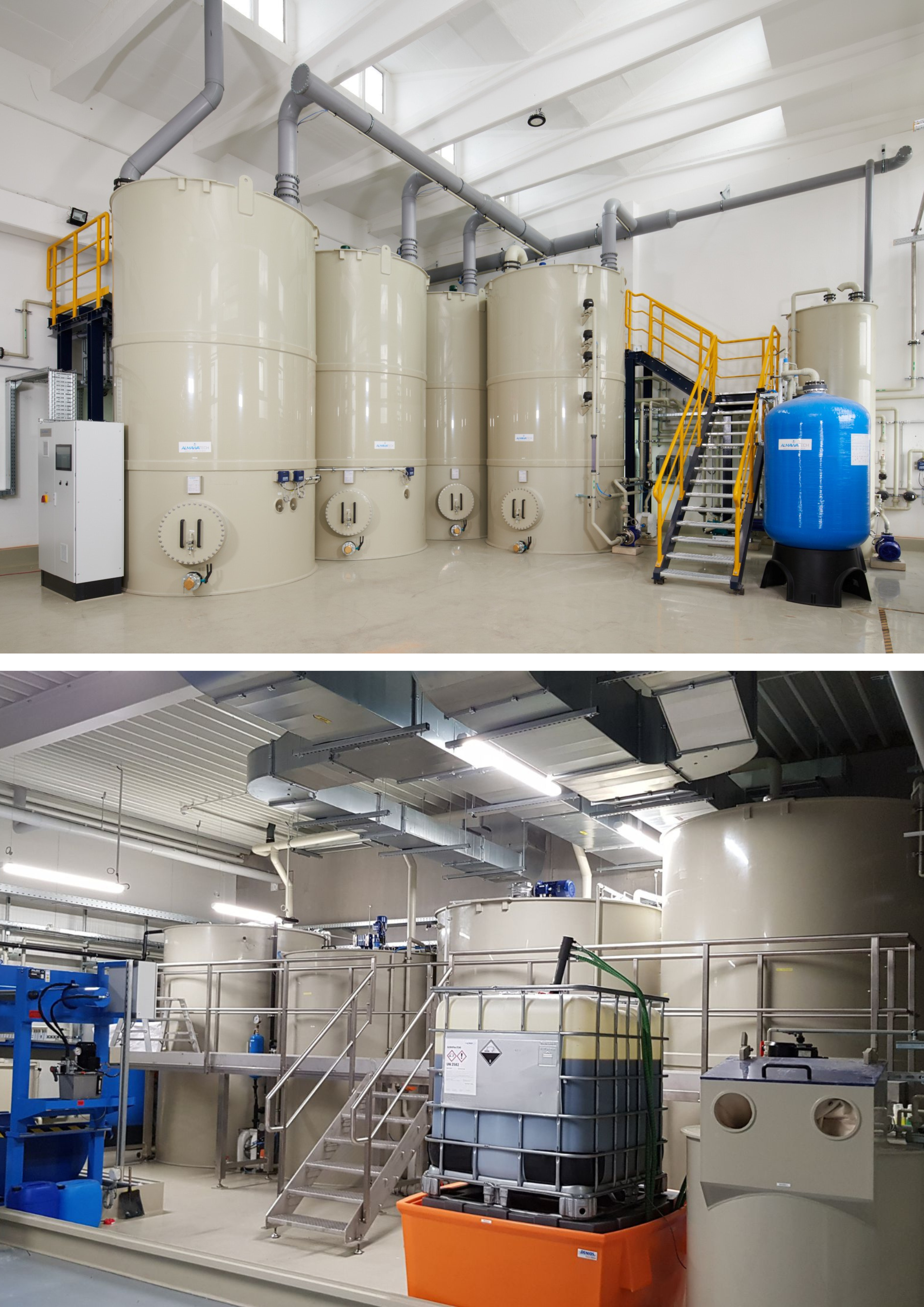A batch system is a system for the discontinuous treatment of water or wastewater that operates in batch mode. In contrast to continuously operating systems, a batch system treats a defined quantity of water or wastewater (a batch) in a defined process. At the end of the treatment cycle, the treated batch is removed from the system and a new batch can be processed. This approach is particularly useful when the amount of wastewater varies or when there are specific treatment requirements for different water qualities.
Table of contents
Technical background
Batch systems are widely used in industrial water and wastewater treatment, especially in processes where the composition of the wastewater can vary greatly or where the treatment needs to be particularly flexible. The functionality of a batch system is based on the fact that the wastewater is collected in a treatment tank and treated in defined steps (the batches). These steps can include physical, chemical or biological processes, depending on the type of contamination and the required final quality of the water.
A typical batch plant comprises the following steps:
Filling: First, a certain amount of wastewater is pumped or fed into the reactor tank of the plant. This quantity represents the batch to be treated.
Treatment: Depending on the requirements, various treatment methods can be used, such as
- Precipitation and flocculation: Chemicals such as precipitants and flocculants are added to precipitate dissolved impurities and solids and form flocs.
- pH correction: The pH value of the water is adjusted to the desired range by adding acids or bases.
- Neutralization: During neutralization, acids or alkalis in the wastewater are balanced out.
- Adsorption or filtration: Adsorption media or filters can be used to remove certain impurities.
- Oxidation: Oxidizing agents such as hydrogen peroxide or ozone can be used to break down organic compounds.
Sedimentation or filtration: After chemical or physical treatment, the water is fed into a sedimentation tank or through filter media to separate the solids formed from the liquid.
Removal of the treated batch: As soon as the desired water quality is achieved, the treated batch is removed from the system and either processed further, discharged into the wastewater network or returned for reuse.
Restarting the batch: Once the batch has been completed, the system is prepared for the next batch.
Areas of application for batch systems
Batch systems are used in many industries, especially where variable wastewater volumes or changing wastewater compositions make continuous treatment difficult. Typical applications include
Electroplating industry
In the electroplating industry, batch systems are often used to remove heavy metals and neutralize wastewater. The wastewater often contains high concentrations of heavy metals such as copper, zinc, nickel and chromium, which are removed by chemical precipitation and subsequent sedimentation.Chemical industry
The chemical industry produces wastewater with varying compositions. Batch plants allow the treatment process to be flexibly adapted to the specific requirements of the respective batch, which enables targeted treatment of pollutants such as organic compounds, heavy metals and acids.Surface treatment and painting
In the surface treatment and painting industry, batch plants are used to treat heavily contaminated wastewater with high concentrations of heavy metals, paints and solvents. These systems make it possible to adapt the treatment precisely to the respective degree of contamination and to react flexibly to process fluctuations.Food and beverage industry
In food production, the process water is often contaminated discontinuously, e.g. through cleaning processes. Batch systems enable the targeted removal of organic substances, fats and proteins contained in the wastewater.Electronics and microelectronics industry
In the electronics industry, batch systems are used to treat process-specific wastewater, which often contains high-value chemicals and metals. This wastewater must be thoroughly cleaned before being discharged into the environment or reused.
ALMAWATECH Batch systems: ALMA CHEM MCW
A specific batch system from ALMAWATECH is the ALMA CHEM MCW. This chemical-physical plant is specially designed for the treatment of heavy metals and pollutants in industrial waste water.
The ALMA CHEM MCW enables and supports flexible adaptation to different wastewater flows:
- Precipitation and flocculation processes for the removal of heavy metals and other dissolved substances.
- Neutralization and pH correction to ensure that the treated wastewater complies with legal requirements.
- Optional post-treatments such as multilayer filters or selective ion exchangersto optimize the water quality for downstream processes.

Photo: CP system ALMA CHEM MCW for the elimination of heavy metals, AOX, hydrocarbons and cyanides designed as a batch system
Advantages of batch systems
Flexibility: Batch systems enable the treatment of varying wastewater volumes and compositions, making them ideal for industries with fluctuating production processes.
Controlled processes: As the treatment takes place in defined steps, the processes can be precisely controlled and the dosing of chemicals optimized, resulting in better cleaning performance.
Adaptability: Batch plants can be adapted to different wastewater qualities by applying different treatment steps in a flexible sequence.
Lower investment costs: Compared to continuous systems, batch systems are often cheaper to purchase and are particularly suitable for small to medium wastewater volumes.
Efficient use of chemicals: As each batch is treated individually, the quantities of chemicals can be precisely matched to the requirements of each batch, resulting in more efficient use of resources.
Challenges with batch systems
Discontinuous operation: As batch systems operate in batch mode, idle times can occur between treatment cycles, resulting in a less continuous process flow.
Complex control: Process control in batch plants requires a high degree of monitoring and automation to ensure that all parameters are set correctly for each batch.
Conclusion
Batch plants are a flexible and adaptable solution for wastewater treatment in various branches of industry. They enable the individual treatment of wastewater in batches and offer the possibility of reacting to fluctuating wastewater volumes and changing compositions. With the right process control and the appropriate treatment agents, as used in the ALMA CHEM MCW-system from ALMAWATECH, batch systems can offer high efficiency and cost-effectiveness in water and wastewater treatment.
For further information on our products, please feel free to contact us at any time!








